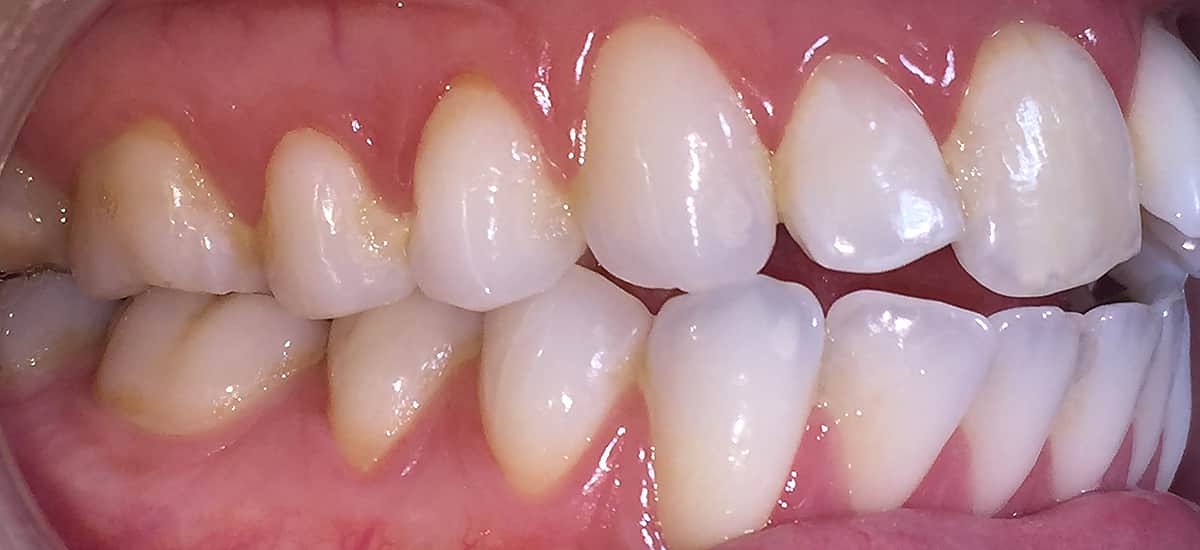Introduction
As the name suggests, open bite describes where the front top and bottom teeth do not close together when the jaw has closed, leaving a gap – often elliptical in shape – between them.
Causes
A range of factors may either cause or worsen open bite. These include…
- Genetics – inherited features of the bone structure in the skull and mouth.
- Thumb sucking.
- Extended bottle feeding / dummy use.
- Breathing through the mouth.
- 'Tongue thrust' – this is where the tongue protrudes over the lower teeth, often when swallowing or talking.
- Pencil chewing.
- Nail biting.
If left untreated, open bite can cause the following problems…
- Substantial wearing down of the back teeth.
- Lisp / difficulty speaking and pronouncing certain letters, especially 'S', 'C', 'Z' and 'sh'.
- Difficulty biting and chewing.
- TMD – Temporo-Mandibular Joint Disorder – sometimes also referred to as ‘TMJ’, which is where there is jaw joint pain, which can also cause headaches (sometimes from trying to clench the teeth due to being self-conscious about their appearance).
- Smile appearance.
Treatment
As with most orthodontic treatment, the earlier open bite is treated the better (ideally before adult teeth appear), although the condition can be treated in adulthood. The following treatments may be recommended, depending on the severity of the open bite and the age of the person…
- Discouraging behaviours that are likely to make the condition worse, e.g. tongue thrusting and / or thumb sucking. These habits can be discouraged using a variety of fixed devices.
- Fitting braces, either conventional braces or Invisalign.
- Fitting orthodontic headgear, which moves the jaw into the correct position.
Where open bite is suspected in a young child, arranging an orthodontic assessment when they reach 7 years old is a good idea.
Where the open bite is severe or has been discovered in adulthood, orthognathic surgery may be required to realign the jaw.






